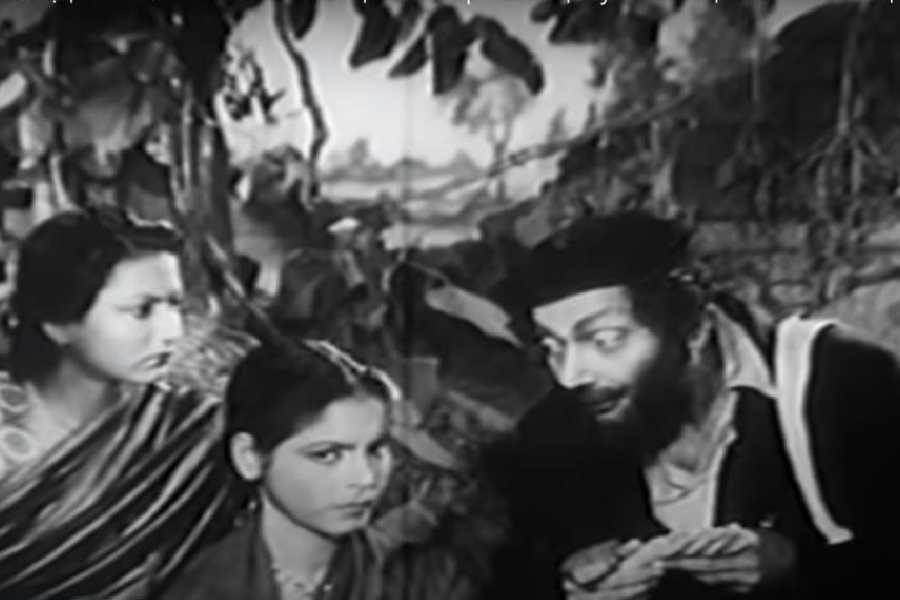Hanabari (1952)
Hanabari translates to haunted house but in this film, the ghost is a gorilla. A mansion of sorts, having fallen into disrepute after the murder of its original owner, is lying abandoned.
Till one day protagonist Jayanta comes upon it. He is gruff and tough but not quite immune to the horror of being visited by a ghost-gorilla. When chased, he takes flight and doesn’t stop till he reaches the only other house in the neighbourhood, where lives a gentleman artist. More characters enter the plot — an inspector, an English-speaking beggar in beret and coat, a hapless elder and new tenant of the hanabari, his two young nieces — the sombre Lalita and the ebullient Namita — and a toughie. There
is murder, assault and more supernatural visitations.
A string of revelations follow. The beggar turns out to be the undercover detective. The artist Srimanta turns out to be the villain-in-chief, one of a smugglers’ gang. The gorilla, a myth of Srimanta’s creation, played by him and the toughie by turn, to keep outsiders from discovering hidden loot. The high point of the film is Lalita singing: “O toh hawa noy, nishuti raat bujhi kotha koy… That is not the whistling wind, it is the night whispering.”
Kankal
(1950)
Tarala is a first-class graduate but financially dependent on her brother and consequently the target of her sister-in-law’s taunts. Desperate to escape this scenario, she decides to get married.
She has 29 love letters, all from different suitors, and she is ready to pick one when the rake Abhay appears. “Will you marry me,” she asks him, but the leering Abhay only hems and haws. At such a time, Ratan enters the scene. He is good, kind and newly come into great wealth. Before you know it, Tarala and Ratan have wed. Suddenly Abhay turns avenger. His sole obsession is to ruin Ratan. Much of the film has to do with Abhay’s machinations. And then one day he tries to rape Tarala. When she resists, he murders her and disposes of the body. Ratan loses his mind but continues to look for his wife, as do the cops.
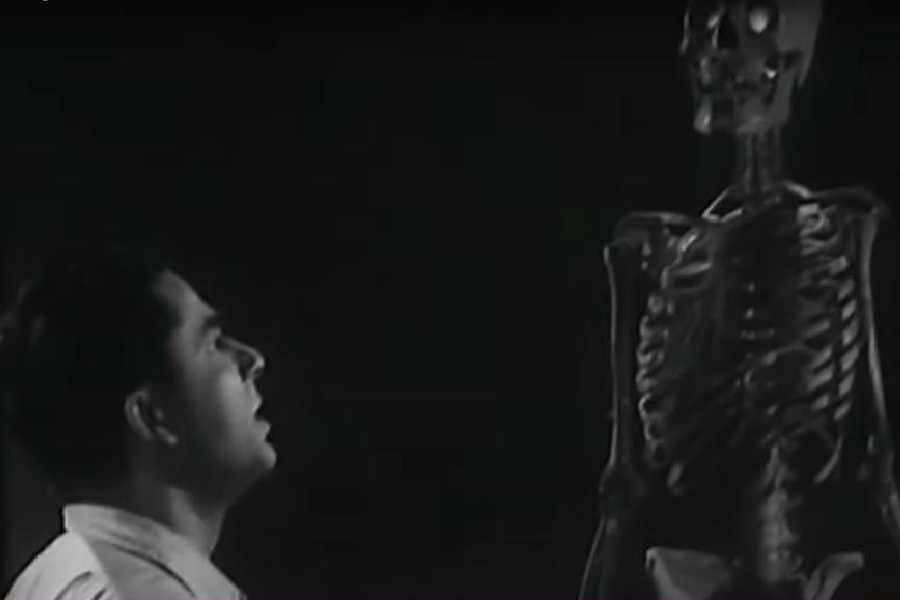
Dr Palit and the avenging skeleton in Kankal
Somehow Tarala’s skeleton finds its way into the chamber of a medical practitioner, Dr Sanyal, and when Abhay turns up at the same chamber, the skeleton takes revenge. There is no sleuth in this movie in the strictest sense but Dr Sanyal with his interest in theosophy joins the dots.
Jighangsha
(1951)
Detective Sen is tasked with the investigation of the murder of his friend Chandrakanta, the Maharaja of Ratnagarh. Rumour has it that a petni or “ghostess” of the marshy lands did him in, apparently the spirit of the woman who knifed to death his preying ancestor years ago before jumping to her death.
The late maharaja’s heir and nephew Suryakanta arrives in Ratnagarh and falls in love, first with the melodious voice of the ghostess and thereafter her person — yes, they have more than one rendezvous in the dead of the night. In the meantime, the murder investigation continues. The prime suspect is Dr Palit, who is perennially on call at opportune moments.
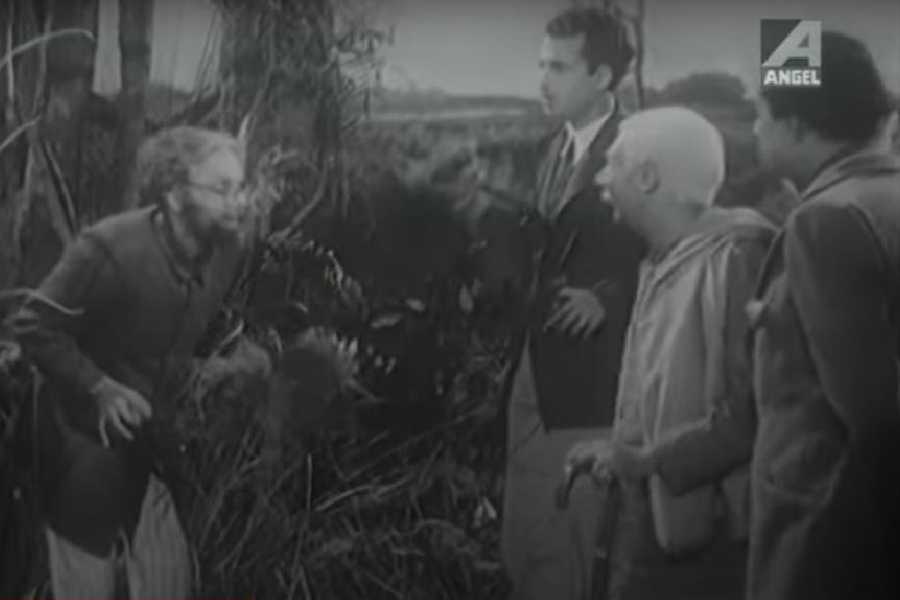
Bikash Ray as the mad professor from the marshes in Jighangsha
In the end, the culprit turns out to be the mad professor always on the prowl in the marshes with his babble about “bryophyte, thallophyta, algae”. Not
to be missed, Bikash Ray as the professor saying, “Everyone talks about struggle for existence. But I believe in struggle for supremacy.” Sounds like someone we all know, na?
Chupi Chupi Aashey
(1960)
The film opens with a silhouette, a figure in a raincoat. One rainy evening in Calcutta, there is a murder on Giri Majhi Lane. The victim is a former employee of an orphanage. The suspect is a raincoat-clad man whistling a certain tune.
Thereafter, the drama shifts to a health resort on the outskirts, run by Kanika and Prabir, recently acquainted business partners with an unmissable chemistry. Among their guests are the sour middle-aged Miss Dhar, the dour Dr Vajpayee, the talkative Madhusudan, the ailing Beni Babu and the comic Mr Veeraswamy. They all arrive amidst a terrific downpour and flooding, and get stranded. Before the telephone goes dead, Prabir receives a call from the local thana alerting him about the arrival of a CID officer.
In due course, Inspector Ghoshal arrives and offers his theory that the murderer from Giri Majhi Lane might be among the guests. But he is not who he says he is, and that holds true for many of the others as well. At different points, different characters appear in raincoats, deepening the intrigue. Miss Dhar is murdered and Kanika nearly so. The song from which the murderer gets his tune, and the film its name goes — “Shey je chupi chupi aashey… He steals upon you.”
Kalo Chhaya
(1948)
Surajit Roy is a detective. Anima Devi comes to hire him to steal something for her, but without hearing her out, he turns her away.
Soon after, he leaves for Sukhchar at the request of the wealthy Rajib Lochan Choudhury, who fears that someone is trying to kill him. When Surajit arrives at Sukhchar, Rajib Lochan has already been murdered. He meets the others living in his house — the partially paralysed Dinanath, who is Rajib Lochan’s elder brother; the family physician; a Chinaman with a pigtail; an estate manager; and Anima, who is apparently Rajib Lochan’s nurse. Gradually secrets tumble out. A dispute centred on a will. A missing brother. It is finally revealed that Dinanath is actually Rajib Lochan in disguise. He murdered his own brother to appropriate their father’s property. The film ends with a phone call.
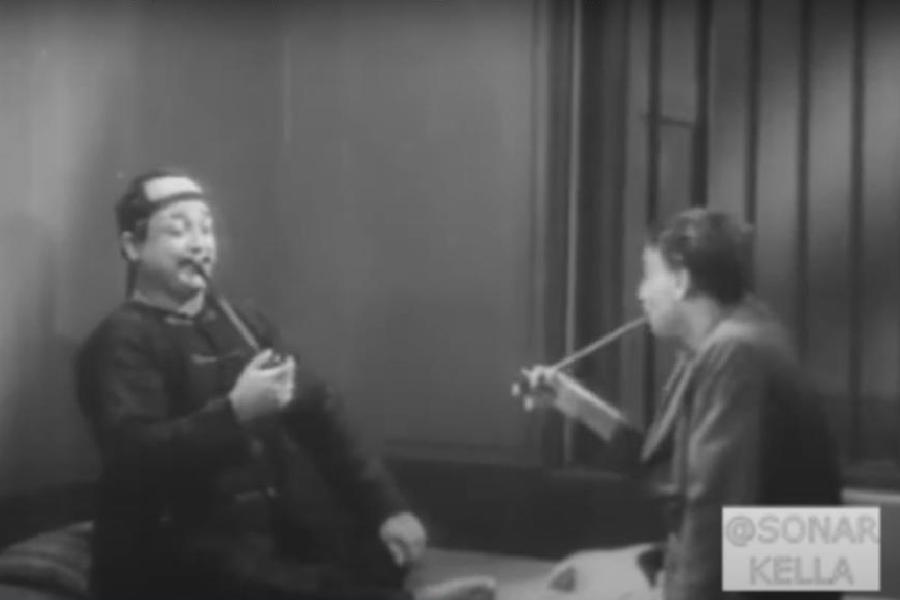
The Chinaman in Kalo Chhaya
Back in Calcutta, Surajit is determined to take a long break, but the caller is insistent. The viewer cannot see the caller, only Surajit’s face, as his indifference falls away. He is saying, “What? You might be attacked? What, there is a body in your room and blood all over? And you won’t call the police? I have to come? At this point, the camera reveals the caller’s identity. It is Anima, hugging a soft toy. Terribly forward for 1948.
Sesh Anka (1963) & Kokhono Megh (1968)
l It was actually a tie in my head between the two movies. I picked one for the suspense element and retained the other for… I shall tell you eventually. Sesh Anka appears to be a love story. Sudhangshu and Soma are in love and soon to get married. Sudhangshu has been married before, a mentally unstable women who died in Rangoon, but that detail only makes him a Mr Rochesteresque figure. On their wedding day, a woman appears claiming to be his first wife Kalpana. But Sudhangshu is adamant, the woman before him is an impostor. He tries to produce proof of his wife’s death, but they go missing. He gets desperate, his equation with Soma changes. He makes a last ditch effort to contact Kalpana’s brother. He arrives but he too insists that the woman is Kalpana. Knackered beyond belief, Sudhangshu blurts out the truth — that woman cannot be Kalpana because he killed Kalpana when she refused to divorce him.
The question at the heart of Kokhono Megh’s mystery is this — why is Seema, played by the sparkling Anjana Bhowmick, suddenly the target of a host of shadowy characters? And what does any of this have to do with her estranged uncle’s murder? Her guardian angel-cum-wooer is an undercover cop played by Uttam Kumar.
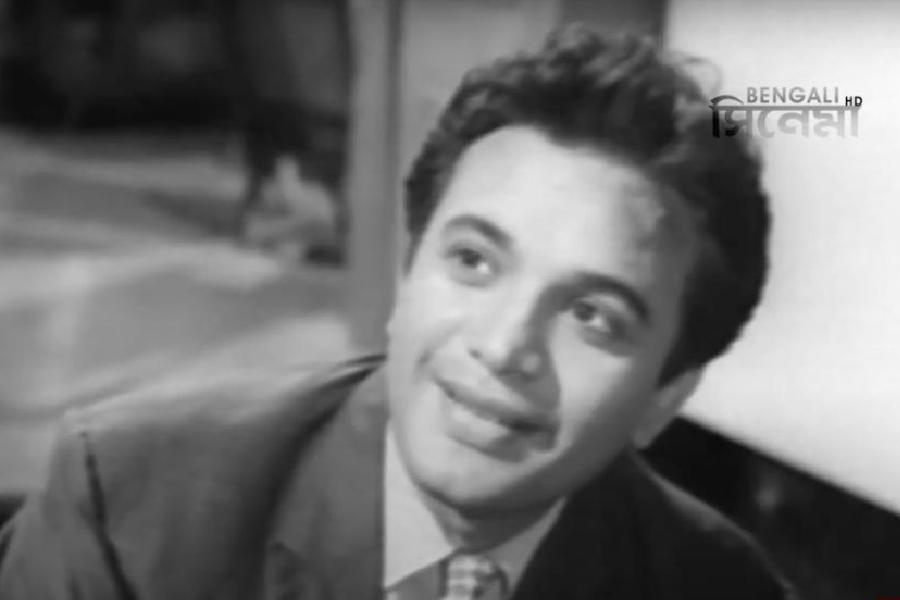
Uttam Kumar in Kokhono Megh
There is this scene when after an evening out, a tripping Seema enters her apartment only to be accosted by a stranger. Just then her date returns and helps her fight off the miscreant. Once all of that is over, Seema asks him, “But what made you come back?” Like those fascinating documentaries that track the tiniest unfurlings of a flower blooming, the camera captures a smile unfold and spread from Uttam Kumar’s eyes to every bit of his handsome face. How can a human being have such a golden, time-defying smile? Now that’s a mystery too. Mull on…

